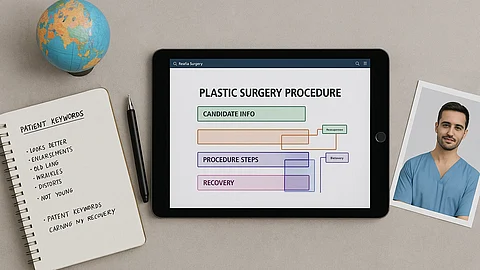According to seoforplasticsurgeon.com, procedure page is a dedicated page on your website that provides comprehensive information about a specific service you offer, such as rhinoplasty, breast augmentation, or liposuction. Instead of grouping all your services onto one generic page, creating individual pages for each procedure allows you to capture highly specific search queries from potential patients who are further along in their decision-making process.
These pages are critical for converting interested searchers into confirmed consultations. When a person searches for "best rhinoplasty surgeon near me," they have high intent. A detailed, professional, and reassuring procedure page can be the deciding factor that convinces them to choose your practice over a competitor's, making it a foundational element of any effective digital marketing strategy.


